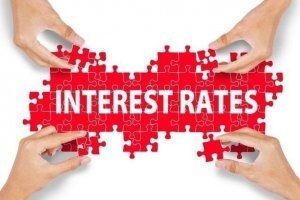Interest rates affect how much you pay towards your home loan each month, so it’s important to understand how they work. Here’s your guide to how interest rates are decided and how they can change over time.

Interest is part of your home loan
When you first take out a home loan, your home loan provider will discuss the total cost of repaying the amount you borrow over the “life of the loan” – the amount of time it is expected to take to pay it back if you make the minimum monthly repayment.
The reason the total cost of a loan is more than the amount you borrow is because, if you take out a principal and interest loan, you pay interest on top of the amount you borrow.
For example, a loan of $600,000 taken out over 25 years will end up costing a total of over $990,000 if the interest rate over that period is 4%. So while you might pay just over $3,000 towards the cost of your loan each month, part of that $3,000 is interest, not a direct payment towards the principal.
Your bank decides your interest rate
The Reserve Bank of Australia sets a nationwide “cash rate” which is effectively the rate banks can borrow money from each other at. This interest rate then influences the interest rates that banks will, in turn charge their customers. However, the official interest rate is not definitive and banks will ultimately decide what rate they charge, as well as whether they will increase or decrease their interest rates in line with RBA decisions.
How have interest rates changed?
Australia’s interest rates have seen highs and lows over the past 25 years. In the early 1990s interest rates climbed above 15%, stabilising at around 7% during the early to mid-2000s. Over the past five years interest rates have declined to their current average of around 4%. This means servicing the cost of a home loan is typically cheaper than it traditionally has been.
Current interest rates are likely to change
As of late 2017, economists are predicting a gradual rise in interest rates, starting in late 2018. This is why it’s important to factor in interest rate rises when deciding how much you can afford to borrow. An online borrowing calculator is can assist you to estimate how much you would need to pay each month with different interest rates in place.
Fixed, variable and split interest rate loans
When setting up your home loan you can choose different ways of dealing with interest rate changes. These include:
- Variable home loan: Your interest rate will go up and down depending on the official interest rate set by the Reserve Bank of Australia, along with other factors.
- Fixed interest rate home loan: This allows you to set an interest rate for a fixed period of time – usually between one and five years.
- Split loan: A combination of variable and fixed, allowing you to fix part of your home loan and leave the other part open to changes in the official rate.
Other factors affecting the amount of interest you’ll pay
Finally, when factoring your interest rate into the cost of your home loan, don’t forget that having a larger deposit will decrease the overall cost of your loan, which means you’ll also pay less interest.
It’s also important to remember that home loan providers include other fees and charges in the cost of their loans. The best way to measure this is to look at each provider’s comparison rate, which shows both the interest rate that applies along with most of the other fees and charges you’ll need to pay over the life of your loan. Costs such as redraw fees or early repayment fees, and cost savings such as fee waivers, are generally not included in the comparison rate.
Want to know more?
Call Linda on 0448 333 666 to talk through your options or email us at info@kepdev.com.au




